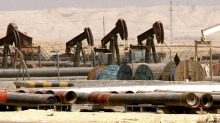How OPEC clouds the issue of oil production
 How much oil does OPEC produce? It is a simple question, but the answer has been complicated after the cartel started this month to publish two different sets of data.
How much oil does OPEC produce? It is a simple question, but the answer has been complicated after the cartel started this month to publish two different sets of data. According to its monthly oil market report, OPEC either produced about 31.2 million barrels a day in February, or a much higher 32.1 million b/d. The difference in the two estimates is equal to twice the production of its smallest member – Ecuador.
The dispute about the true level of production is not merely an internal matter for the cartel that controls 40 per cent of the world’s oil supplies. It complicates policymaking and contributes to instability in oil markets as traders are unsure about supply.
OPEC and other organizations have traditionally relied on secondary sources to estimate production - a network of individual spotters watching, binoculars in hand, the movement of tankers in and out of the world’s biggest export terminals to estimate production levels. According to these secondary sources, which the market considers to be the most reliable, OPEC produced in February about 31.2 million b/d.
But OPEC, having relied only on secondary sources since 1986, has this month started to publish a new set of production data, based on “direct communication” from member countries. The new estimates based on official data from OPEC countries point to much higher production than the one based on secondary sources.
Take Kuwait. OPEC puts its production based on secondary sources at 2.7 million b/d, but the estimate based on “direct communication” says the emirate is pumping 3.01 million b/d. Saudi Arabia, United Arab Emirates, Iran and Venezuela are similar examples, with official production higher than the estimated number from secondary sources.
Qatar is the exception. According to secondary sources, the small emirate pumped an estimated 800,000 b/d. But Doha officially says it only produced 750,000 b/d.
The differences between the secondary sources estimate and the “direct communication” figure is relatively small for most countries, with the exception of Iran and Venezuela. Tehran claims its real production is roughly 400,000 b/d higher than the one estimated by secondary sources, while Caracas puts its figure at 500,000 b/d higher.
The problem with a new set of numbers is that OPEC is causing more confusion. If the “direct communication” figures are accurate, why does the cartel continue to publish the secondary source estimates? And if OPEC members - and the secretariat itself - do not fully trust the official numbers, why publish them?
The truth is that oil traders and policy makers put more trust in the secondary source estimates than the official data, even if they are far from perfect.
You can return to the main Market News page, or press the Back button on your browser.

